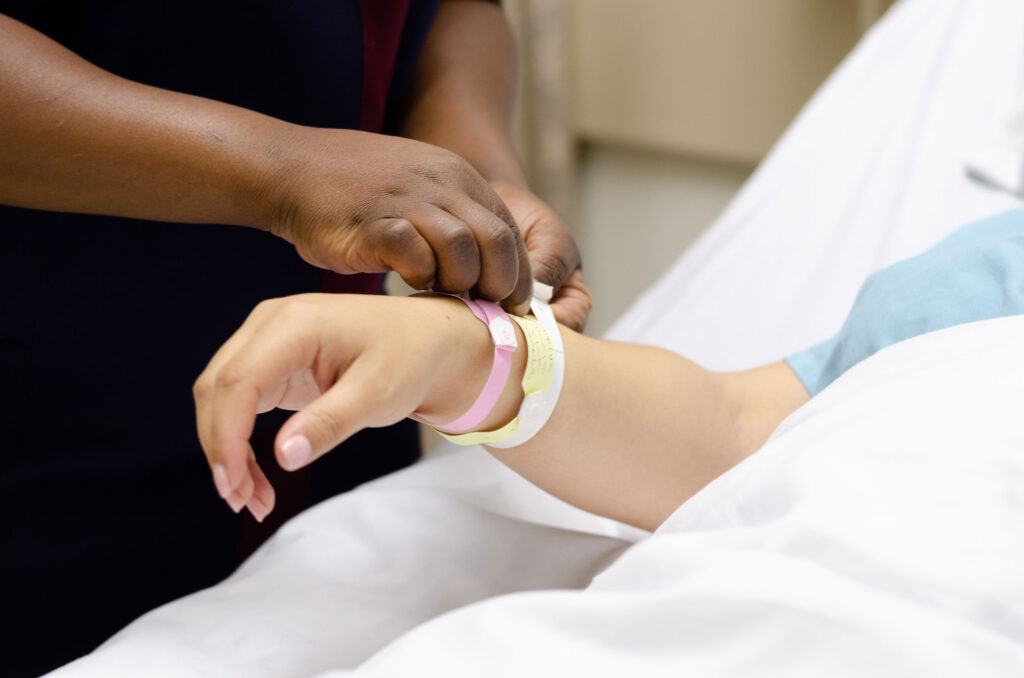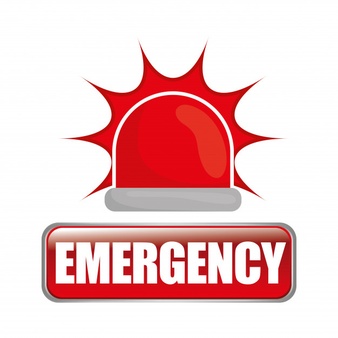Preparing for anesthesia, hospital stays, and medical emergencies
if you have idiopathic hypersomnia or narcolepsy type 1 or 2

if you have idiopathic hypersomnia or narcolepsy type 1 or 2
 Yes. When you stay in the hospital or have anesthesia (including during dental procedures and colonoscopies), you may face unique challenges.
Yes. When you stay in the hospital or have anesthesia (including during dental procedures and colonoscopies), you may face unique challenges.
Note: Time under anesthesia often doesn’t count as sleep.
When you have hypersomnia symptoms, unprepared healthcare teams may not know what is causing them. They may mistakenly think that you are having a bad side effect or worsening of your medical condition or that you are behaving in an uncooperative or rude manner.
You may need to bring your specialized hypersomnia medicines from home and give healthcare teams clear direction on safely storing, securing, and dosing them.
Opioid pain medicines (such as Hydrocodone).
Benzodiazepines (such as Ativan).
Anesthetics (such as Propofol).
You may respond differently to other medicines used during anesthesia.
It may take you an extra long time to come out of anesthesia, and you may be much groggier and more unresponsive than someone without a hypersomnia.
You may have a higher risk of sleep apnea, which can cause complications (problems) with anesthesia.
You may need to wait longer than the usual 24 hours after anesthesia or have your hypersomnia medicines adjusted before you can safely drive or operate heavy machinery.
It’s very important for you to work with your healthcare teams to make a care plan before you have a procedure with anesthesia or a hospital stay. This will help ensure your successful treatment while avoiding unnecessary worsening of your hypersomnia symptoms.
Download our PDF “Clinician’s guide to hospitalization and anesthesia for people with idiopathic hypersomnia and narcolepsy types 1 and 2” to inform your doctors and healthcare team members about:
Hypersomnia symptoms
Common problems that may happen during anesthesia and hospital stays
Accommodations (adjustments in your care) that may help
Download our PDF “Anesthesia and hospital stay care plan” to fill out with your healthcare teams. (Download our PDF example care plan.)
Monitoring symptoms
Maintaining sleep schedules
Changing medicines if needed
Any special considerations for anesthesia
Review the Guide together, decide on accommodations, and further develop your care plan.
If needed, these doctors should work with your sleep doctor until everyone agrees on all elements of your care plan. (Note: Ask if there will be any added costs for accommodations.)
Have your completed care plan and the Guide entered into your medical record and shared with all your healthcare team members. Print brightly colored copies to post noticeably to your hospital room white board or bed rail and share with any new team members.
Note: Use Acrobat Reader to complete the fillable PDF form (download Acrobat Reader here). You can click each text box to type in your information or Tab to cycle through each form field. Font size will automatically get smaller to allow more text once you reach the end of a line or box.
If you have medical conditions other than your hypersomnia sleep disorder, make a complete list to share broadly with all your doctors. Include:
All your diagnoses
All your prescription and over-the-counter treatments, including dosing details
All your doctors, including their specialties and contact information
Share our web page with your doctors: “Clinician planning for anesthesia, hospitalization, and medical emergencies.” It includes references and resources for them.
 During emergencies, you may not be able to tell medical personnel about your hypersomnia symptoms and possible complications. Having a medical alert and a care plan for emergencies will make it much more likely that you receive the best possible care.
During emergencies, you may not be able to tell medical personnel about your hypersomnia symptoms and possible complications. Having a medical alert and a care plan for emergencies will make it much more likely that you receive the best possible care.
Follow the steps above to make or update your care plan with your sleep doctor. Review and update your care plan about once a year and when your health needs change.
Before setting up your medical alert, you will need to make a link to the medical documents that the emergency care team will need. These may include:
Your care plan
Your sleep studies
A link to our web page “Read about hypersomnia sleep disorders and medicines for treatment”
Any other medical records you and your doctors think are important to include, such as those documenting past problems with anesthesia or sedating medicines (such as opioids)
To set up a link to your medical documents:
Important: Make this folder publicly available so medical personnel can access it in an emergency. (Please note that HF does not endorse any of these cloud storage services and does not guarantee the security of your medical information. The decision to share your medical information, and your selection of a cloud storage service, are personal and are made at your own risk.)
Add the shortened URL to the information in your medical alert.
There are 3 options for setting up a medical alert. Consider setting up 2 or even all 3 alerts to increase the chances that medical personnel will find the information quickly. (Note: Spell out the full name of your diagnosis instead of using abbreviations such as IH, which may be confused with other medical conditions.)
See pcmag.com’s “How to Add Emergency Info to Your Phone’s Lock Screen.” Make sure to include your shortened URL in the medical notes section.
You can find these on a variety of online sites, such as:
MedicAlert (one of the first providers of medical IDs)
MyID (has a free subscription tier)
Print your shortened URL onto the wearable medical alert item.
We offer free medical alert cards. These are fillable PDF files that you can print and fold down to the size of a business card. Include the shortened URL link to your personal medical information on the card. Download yours now!
Published May. 1, 2020 |
Revised Jan. 30, 2024
Complete update Jan. 22, 2024